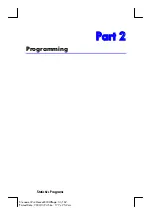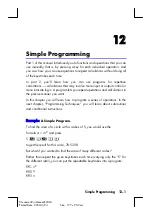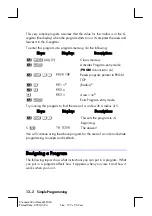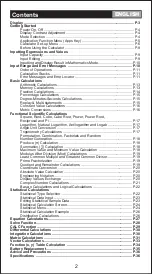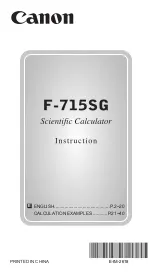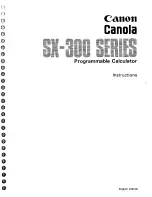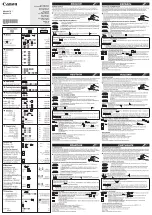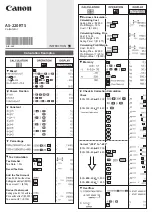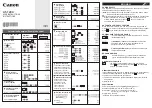
12–14 Simple Programming
File name 32sii-Manual-E-0424
Printed Date : 2003/4/24 Size : 17.7 x 25.2 cm
Using VIEW for Displaying Data
The programmed VIEW instruction
{
variable
stops a running
program and displays and identifies the contents of the given variable, such
as
/)
This is a
display only
, and does not copy the number to the X–register. If
Fraction–display mode is active, the value is displayed as a fraction.
Pressing
copies this number to the X–register.
If the number is wider than 10 characters, pressing
{
displays the entire number. (If it is a binary number with more than 12
digits, use the
<
and
6
keys to see the rest.)
Pressing
(or
a
) erases the VIEW display and shows the
X–register.
Pressing
z
b
clears the contents of the displayed variable.
Press
f
to continue the program,
If you don't want the program to stop, see "Displaying Information without
Stopping" below.
For example, see the program for "Normal and Inverse–Normal
Distributions" in chapter 16. Lines T15 and T16 at, the end of the T routine
display the result for X. Note also that this VIEW instruction in this program is
preceded by a RCL instruction. The RCL instruction is not necessary, but it is
convenient because it brings the VIEWed variable to the X–register, making it
available for manual calculations. (Pressing
while viewing a VIEW
display would have the same effect.) The other application programs in
chapters 15 through 17 also ensure that the VIEWed variable is in the
X–register as well — except for the "Polynomial Root Finder" program.
Using Equations to Display Messages
Equations aren't checked for valid syntax until they're evaluated. This means
you can enter almost
any
sequence of characters into a program as an
equation — you enter it just as you enter
any
equation. On any program line,

